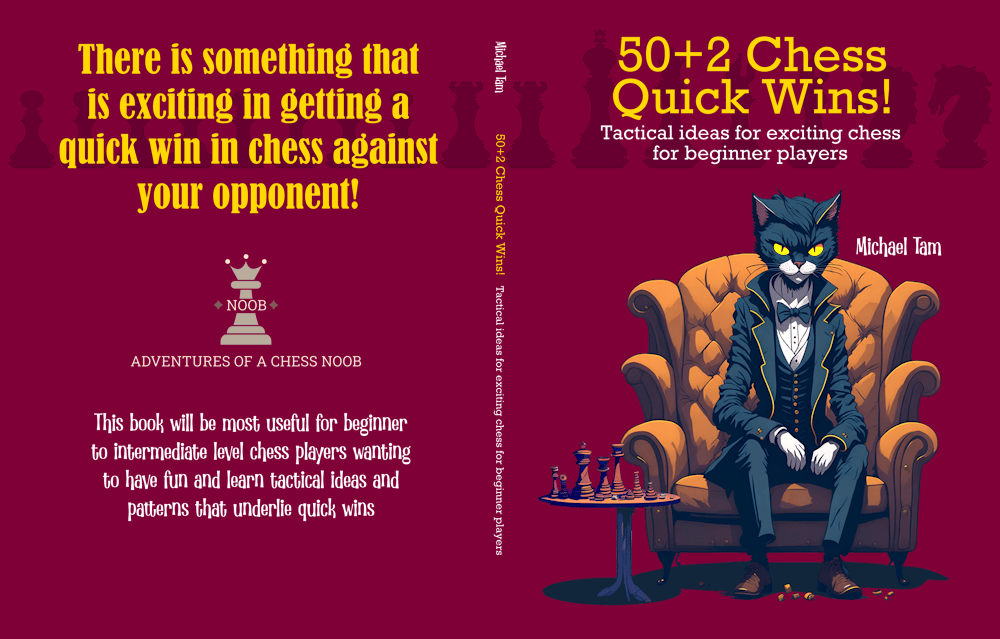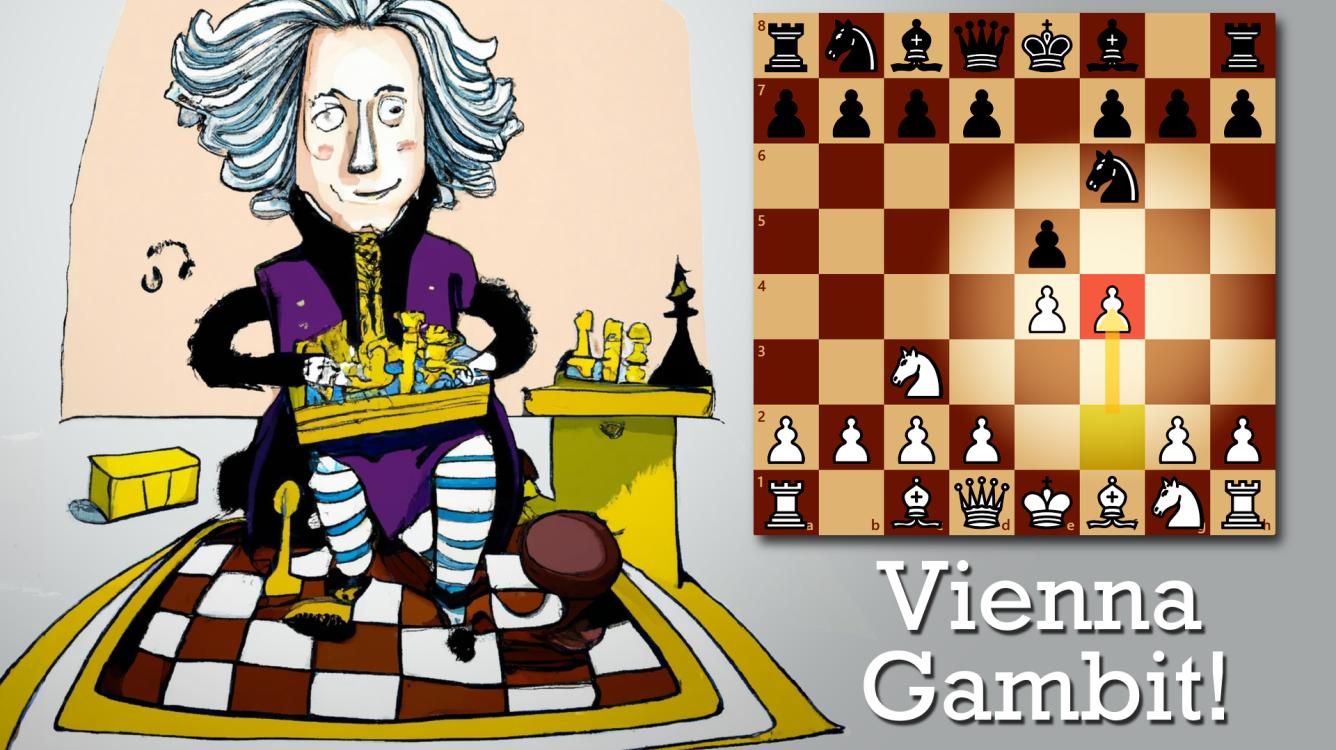
How To Play The Vienna Gambit - A Complete Guide For Beginners
#vienna #viennagambit #chessopenings #howtoplay #beginnerguide
What is the Vienna Gambit?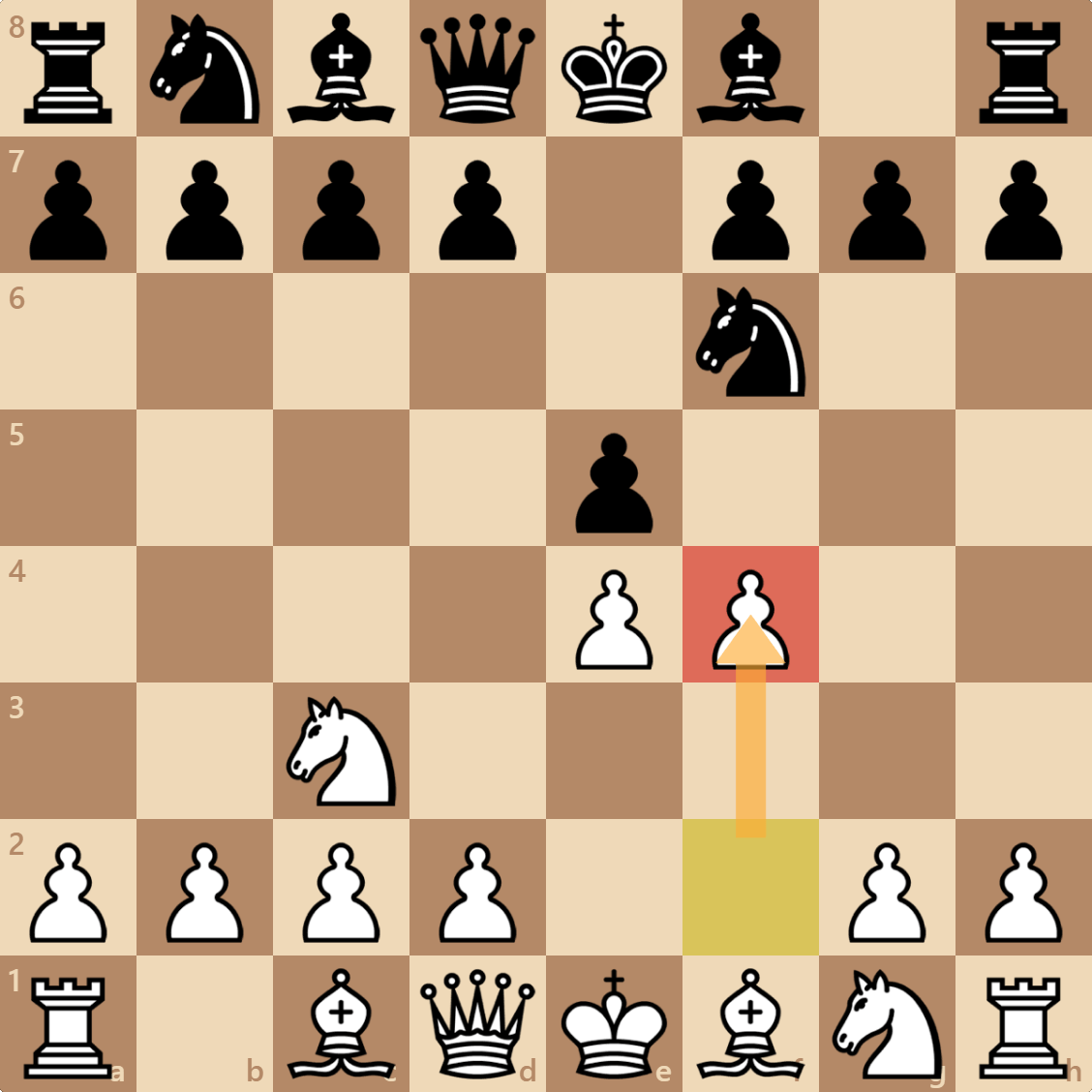
The Vienna Gambit is credited to being developed by Carl Hamppe, a Swiss government official in the 1800s who spent much of his time in chess cafes in Vienna! In the earliest days, "Hamppe's Game" was seen as a potential way of playing a delayed King's Gambit.
To play the Vienna Gambit, you must have the white pieces and begin with the king's pawn opening, and Black must respond with their king's pawn (1. e4 e5). On the second move White develops the queen's knight (2. Nc3), which is the start of the Vienna Game opening.
Black now has a variety of options. According to the Lichess community database of lower rated games of blitz and rapid, the most common next move by Black, occurring a third of the time, is the natural looking (2. Nf6) - the "Falkbeer Variation" of the Vienna Game. This now allows White to play the wonderful, fun, and provocative, (3. f4), otherwise known as the Vienna Gambit (1. e4 e5 2. Nc3 Nf6 4. f4)! White wins around 60% of the time from this position.
Before we move on, I'm going to just flag a couple of things that I won't be covering.
Max Lange Vienna Gambit (1. e4 e5 2. Nc3 Nc6 3. f4)
On move 2, Black could play (2... Nc6), which is known as the "Max Lange Defense" of the Vienna Game. White can still play (3. f4) and this is also known as the "Vienna Gambit". This variation is quite rare, and it isn't as good as the Falkbeer Vienna Gambit, which is usually what we mean by "Vienna Gambit". I'm not going to cover the Max Lange Vienna Gambit in this video, but I have a few videos on the opening: https://youtube.com/playlist?list=PL5X_LrdT7hCXhXCyiC0RM9g5RSZKZ6DiD
Vienna Game Main Line (1. e4 e5 2. Nc3 Nf6 3. f4 d5)
This single best response by Black to the Vienna Gambit is (3. d5) which enters the Vienna Game Main Line. This is, surprisingly, an uncommon response occurring only in 8% of games from the Vienna Gambit position in beginner-intermediate games. Those who play the Vienna Gambit regularly will need to learn the lines and ideas in the Vienna Game Main Line as Black has some great attacking chances.
- An introduction to the Vienna Game Main Line: https://youtu.be/9WdVXDrbfVI
- Main Line games: https://www.youtube.com/playlist?list=PL5X_LrdT7hCW_YQ9R_sK4O2FKuvK39L86
Vienna Gambit Accepted (1. e4 e5 2. Nc3 Nf6 3. f4 exf4)
Many games of the Vienna Gambit Accepted: https://www.youtube.com/playlist?list=PL5X_LrdT7hCUm7ZtVwiZaCCDy-iXwkjc6
Almost half the time in beginner-intermediate games, Black will be sporting and accept the gambit (3... exf4), and we'll prepare for a fun game!
The tactical idea is that we've deflected Black's central pawn to the side, so we can now push our e-pawn further forward (4. e5) and Black is immediately faced with a problem. The pawn now attacks Black's knight on f6. All their knight's potential escape squares on the main part of the board are covered by our pieces, and it appears that the only option for Black is to undevelop the knight to g8!

Surprisingly, undeveloping the knight to g8 is in fact the best move for Black. Occasionally, Black will make an immediate mistake under this pressure and move the knight to one of your protected squares and immediately hang their knight. Most commonly, they'll miss the fact that the light square diagonal is covered by the White queen. If this happens, capture their knight, and continue the game with a massive advantage.
Black retreats their knight immediately (Vienna Gambit Accepted, 4. e5 Ng8)
In Vienna Gambit lines, we need to keep an eye out for Black's potential Qh4 which comes with check. Developing our king's knight (5. Nf3) shuts down that risk. Strategically, we want to take advantage of our big lead in development. The general tactical themes are to (i) take the centre (e.g., d4), (ii) develop pieces, (iii) recapture the pawn on f4, and then (iv) attack down the f-file. Have a look at the indicative game down this line in the PGN reader.
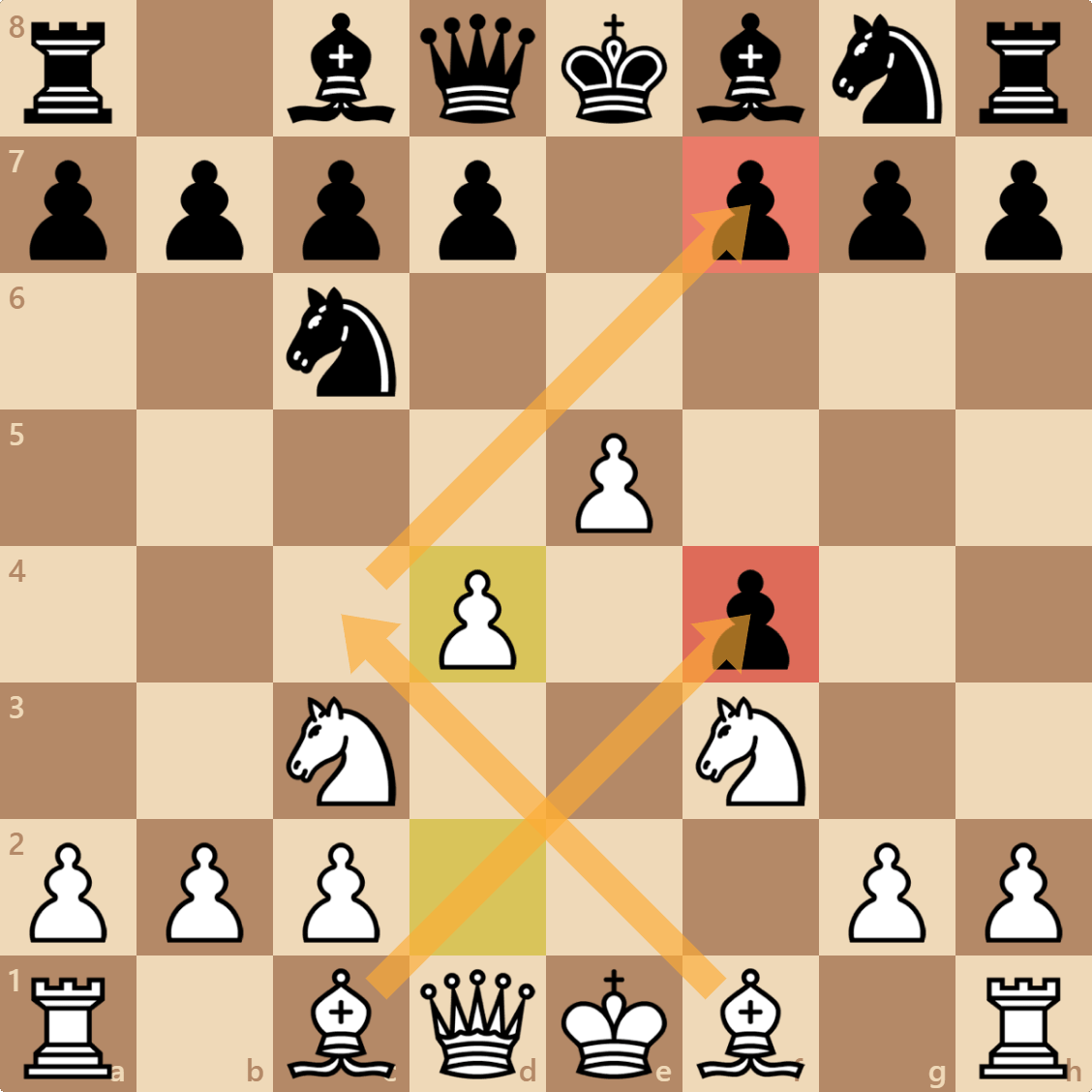
Black attempts to pin the pawn (Vienna Gambit Accepted, 4. e5 Qe7)
The seeming loss of two turns by developing and then undeveloping the knight feels so wrong, that Black will try to avoid it as much as possible. So commonly, Black will find and play (4... Qe7), pinning our pawn on e5 to the king, and temporarily defending their knight.
However, this simply doesn't work for Black as we can play symmetrically with (5. Qe2), unpinning the pawn and thus, the e-pawn is immediately attacking the knight, and once again undeveloping the knight to g8 is the only good move. Black will almost always make this move now as it seems inevitable - all other moves simply result in the immediate loss of material (5... Ng8).
On move 6, White has now one of two options. The good and safer option (recommended) and a spicy higher risk (not recommended) that can result in some super interesting games.

Safer, and arguably best approach (VGA, 4. e5 Qe7 5. Qe2 Ng8 6. Nf3)
Just like the situation where Black immediately undeveloped their knight, we need to deal with the risk of Qh4 which comes with check. Developing the king's knight removes the risk. And the strategy is like before - take advantage of the lead in development. Tactically, control the centre with pawns, develop pieces, recapture the pawn on f4. Additionally, with Black's queen on e7, Nd5 can be powerful move.

Spicy, risky approach (VGA, 4. e5 Qe7 5. Qe2 Ng8 6. d4)
The plan with (6. d4) is that we take the centre, and we INVITE Black to go down a garden path with Qh4+. At the end of this sequence, there can be a rather surprising outcome where Black loses their queen but promotes a new queen, but this new queen will be trapped and lost.

Black is better in this position but only if they find the best move, which isn't obvious (10... b6). White, despite being down 6 points of material, is otherwise ahead. If you explore the indicative line in the PGN reader, Black loses their second queen, and the middle game becomes extremely unbalanced with an advantage to White.
Vienna Gambit Declined
If Black chooses to not accept the Vienna Gambit, they are faced with a problem. Simply, the White f-pawn is threatening their undefended e-pawn on e5. To decline the Vienna Gambit, Black must defend their e-pawn, and there are only three rational looking options: Nc6, Bd6, and d6. Importantly, none of these are good for Black, though White does need to know how to play the position.
Occasionally, Black will make a mistake and not defend the e-pawn. In that case, just capture the e-pawn and continue to play chess with an advantage from the opening!
Vienna Gambit Declined, 3... Nc6
Games of the Vienna Gambit Declined, 3... Nc6: https://www.youtube.com/playlist?list=PL5X_LrdT7hCUzvJdPzV3TrTCOdk9xZWVJ
This is one of the most common ways that Black declines the Vienna Gambit and it's almost an [+2] mistake. White's approach is now very simple - capture the e-pawn and threaten the Black knight on f6. The Black knight, just like in the Vienna Gambit Accepted, has nowhere to go on the board other than undeveloping so the other knight on c6 is practically forced to capture (4. fxe5 Nxe5).
However, we now have (5. d4), hitting the knight now on the e5 square. The knight now must move yet again (only c6 or g6 are available), and in both situations, pushing forward with our e-pawn (6. e5) results in the same pressure on the knight on f6 as in the Vienna Gambit Accepted - it seems that it must undevelop to g8.
This sequence of moves forces Black to commit to multiple knight moves in the opening that don't lead to development, while giving up the centre to White.
Knight goes to g6 variation (VGD, 3... Nc6 4. fxe5 Nxe5 5. d4 Ng6 6. e5)
The strategic and tactical themes are quite like the Vienna Gambit accepted.
If the knight immediately undevelops (6... Ng8), which is Black's best move, the strategy is to make use of the massive lead on development. So tactically, develop the king's knight (7. Nf3) to prevent Qh4+, develop the king's bishop, and castle kingside. There is potentially a very strong attack down the semi-open f-file with White's rook on f1. In many lines, a bishop sacrifice-capture of Black's f7 pawn can be devastating.

If the Black attempts to pin the White pawn on e5 to the king with the queen (6... Qe7), then the exact tactical approach can be used in the analogous position in the Vienna Gambit Accepted. Unpin with a symmetrical queen move (7. Qe2), and Black is forced to undevelop their knight regardless (7... Ng8). Now for White, develop the king's knight, with the additional tactic that Nd5 is very strong with the Black queen on e7.
Knight goes to c6 variation (VGD, 3... Nc6 4. fxe5 Nxe5 5. d4 Nc6 6. e5)

This has almost the same tactical ideas as compared to the knight going to g6 above. The one exception is if Black attempts to pin the pawn on e5 to the king (6... Qe7).
In this variation, you cannot unpin the pawn with a symmetrical queen move as the queen is needed to defend the d4 pawn. Instead, unpin with the bishop (7. Be2).
Vienna Gambit Declined, 3... Bd6

Indicative game of Vienna Gambit Declined, 3... Bd6: https://youtu.be/esWCDa8FXF4
The way to approach this variation is almost the same as declined with 3... Nc6. Capture the e-pawn, after Black captures back, push d4, the bishop is forced back to d6, and then e5, this time, with a fork of the bishop and knight (4. fxe5 Bxe5 5. d4 Bd6 6. e5).

Regardless of whether Black attempts to pin the e5 pawn, Black will lose a piece from the pawn fork.
Vienna Gambit Declined, 3... d6
Games of the Vienna Gambit Declined, 3... d6: https://www.youtube.com/playlist?list=PL5X_LrdT7hCWIJFtm6LtyGyYGubfojxfT
Declining with d6 is the "least bad" way for Black to decline the Vienna Gambit (other than playing 3... d5, the Main Line). For us playing the Vienna Gambit, it does mean that we need to be careful. Although White has the advantage, there is no "killer blow" and I've lost plenty of games against Black!
A tactical idea against the relatively slower and conservative approach by Black is to take space and the centre by slamming a third pawn onto the fourth rank. We want to play d4 if possible, so to support that, we develop our king's knight behind the f-pawn (4. Nf3).

Two of the most common responses by Black now allow this.
If Black develops their other knight, we can push d4 and Black is pretty much forced to trade and it's fine for White (4... Nc6 5. d4 exd4 6. Nxd4). The knights will probably get traded next and chess continues with a small advantage [+0.5].
If Black develops their dark square bishop, the same. We push d4 and Black is pretty much forced to trade and it's fine for White (4... Be7 5. d4 exd4) and we can capture back with either the queen or knight.
One last variation is worth knowing.
Black strikes out with their bishop (VGD, 3... d6 4. Nf3 Bg4)
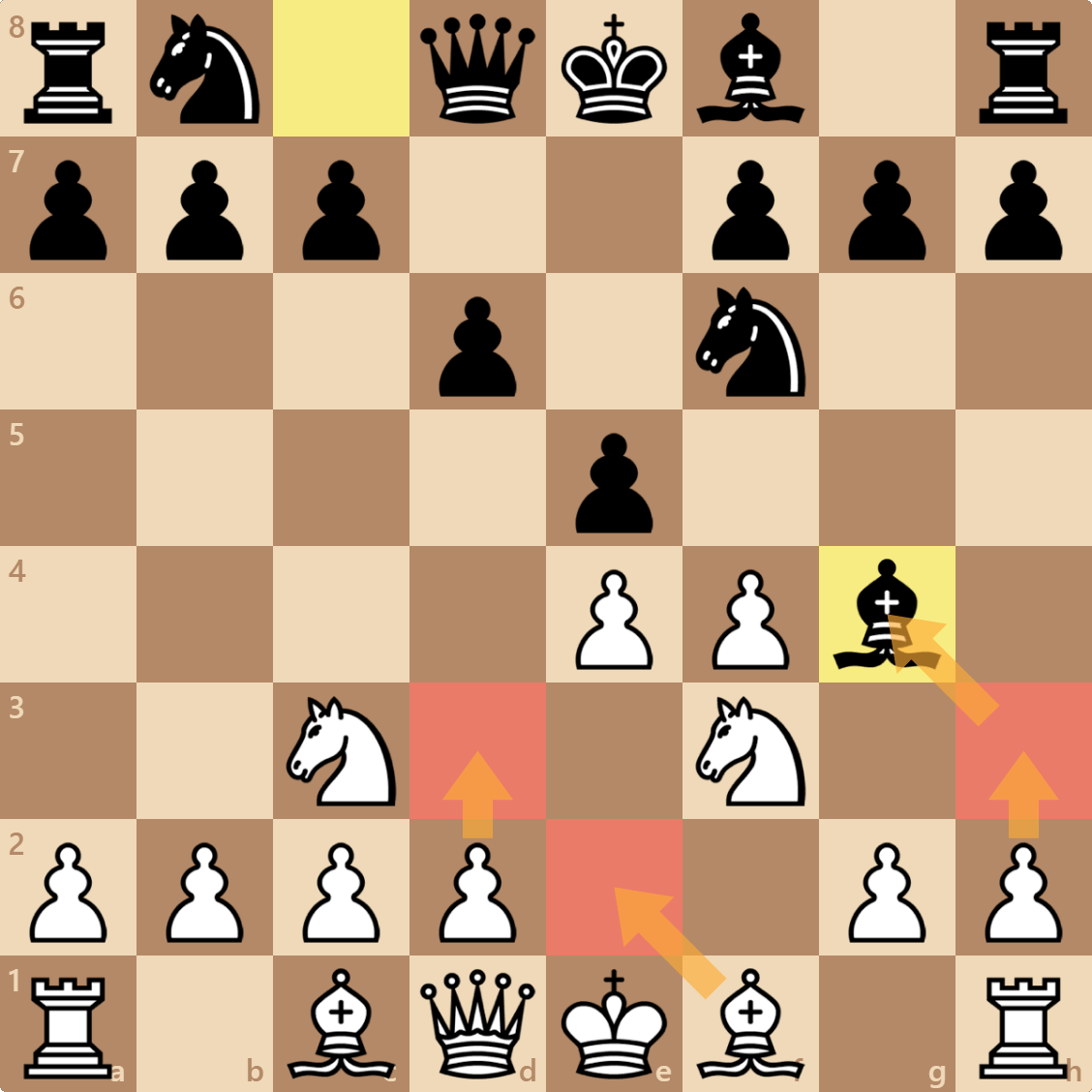
Occasionally Black will feel cramped and strike out with their bishop. This is objectively bad for Black, and if they aren't careful, they could get their bishop trapped.
White has a number of perfectly good moves as per above: d3, Bf2, h3. My recommendation, however, is to immediately force the issue. We are asking Black to immediately justify their bishop move with the h-pawn (5. h3).
Black's best move is to double down and to trade their bishop for our knight, which we will capture back with the queen (5... Bxf3 6. Qxf3) and chess continues with White having an advantage in development and the bishop pair.
Otherwise, Stockfish recommends retreating the bishop to its starting square!
With Black attempts to maintain the pin with (5... Bh5), we chase with our pawns and the bishop may well get trapped and captured. Chess then continues with White having a nice material lead.
![]()
* * *
![]()
Are you interested in the Vienna Game and the Vienna Gambit? Learn more about the Romantic style of chess in my book, “Become a Chess Assassin! Learn to play the best chess opening attacks”! 🤩👍



